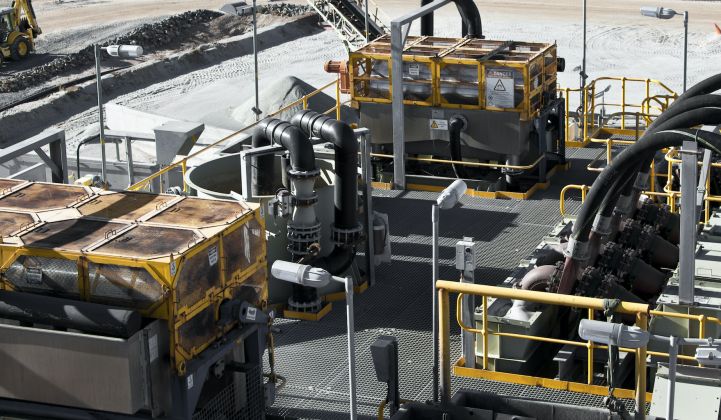Lithium Australia last month became the latest in a growing list of mineral extraction firms to branch out into battery manufacturing.
The Perth, Western Australia-based lithium company announced acceptance of an offer for 99.7 percent of the Very Small Particle Company (VSPC), an Australian firm that develops and produces nanoscale metal oxides for lithium-iron-phosphate electric vehicle batteries.
Lithium Australia said VSPC, of Queensland, had spent 14 years and AUD $30 million (USD $23 million) developing “the world’s most advanced cathode production technology for lithium-ion batteries.”
Lithium Australia will “expedite re-commissioning” of a VSPC pilot plant for cathode powder production and battery production and testing, “with a view to providing a range of cathode materials for assessment by major battery manufacturers,” according to a press release.
“The addition of VSPC to Lithium Australia's technology base not only provides it with exposure to the most profitable process step in the battery production cycle -- the manufacture of cathode powders -- but also 'closes the loop' of the energy-metal cycle,” it added.
Lithium Australia’s managing director, Adrian Griffin, told GTM that “cathode powders are the biggest uplift in the value chain” for lithium.
Lithium Australia, formerly known as Cobre Montana, is aiming to become a vertically integrated lithium producer. It has a process called SiLeach that it says can extract lithium from silicates discarded by traditional extraction processes. It is also developing lithium-ion battery recycling facilities and exploring lithium extraction in Australia, Germany and Mexico. Buying VSPC’s cathode powder production assets is the final piece of the jigsaw for the company.
But Lithium Australia is not the only materials business moving downstream into battery component manufacturing.
Jiangxi Ganfeng Lithium, one of the world’s top five lithium producers, has been building lithium-ion batteries through its Jiangxi Ganfeng Lithium Battery subsidiary since 2007.
Similarly, Canada’s High Power Exploration (HPX) has a majority share in Pu Neng, a Chinese vanadium redox flow battery (VRFB) maker. Other names have joined the list in the last six months.
In November, for instance, the South African vanadium and coal mining company Bushveld Minerals announced the deployment of South Africa’s first utility-scale VRFB.
Although the product was supplied by UniEnergy Technologies, its installation at an Eskom test center in Rosherville was a way to test battery technology on behalf of the mining company’s energy-storage focused Bushveld Energy subsidiary.
In December, meanwhile, Canadian lithium producer MGX Minerals snapped up another flow battery maker, ZincNyx Energy Solutions, which is hoping to launch a zinc-based product within a year.
And last month Magnis Resources, of Australia, announced it was upping its stake in a U.S. battery development consortium called Imperium3 New York, which acquired Alevo’s North Carolina factory machinery in auction as part of plans for a 1-gigawatt-hour-a-year facility.
The rationale for this spate of downstream ventures is not entirely clear. Mineral companies already look set to benefit massively from the soaring battery production needed to satisfy the electric vehicle and stationary energy storage markets.
Producing their own batteries could put these companies in direct competition with their customers. And succeeding in the battery business is not exactly easy. Against this, however, moving up the value chain could help unlock more profitable revenue streams and at the same time help mining companies hedge against volatility in materials markets.
Many of the manufacturing ventures are from companies that have yet to establish a major presence in the battery industry value chain. This means they may have less to lose from competing with established battery names.
Few companies are daring to go head-to-head with the Asian lithium-ion giants, preferring instead to focus on single components, such as cathodes in the case of Lithium Australia, or lesser known products, such as VRFBs at HPX and MGX Minerals.
Whatever the strategy, “a lot of lithium companies are looking at ways they may be able to branch downstream and do a bit more value adding,” said Andrew Miller, a senior analyst at Benchmark Mineral Intelligence.
“If you can own the mineral resource and own some downstream technology, that’s obviously a big benefit.”




